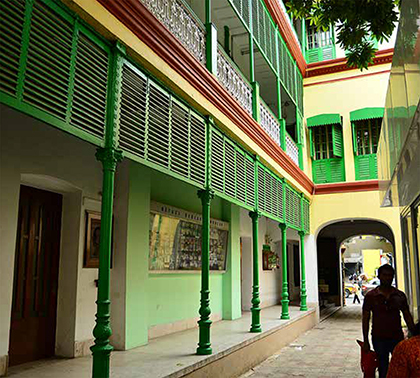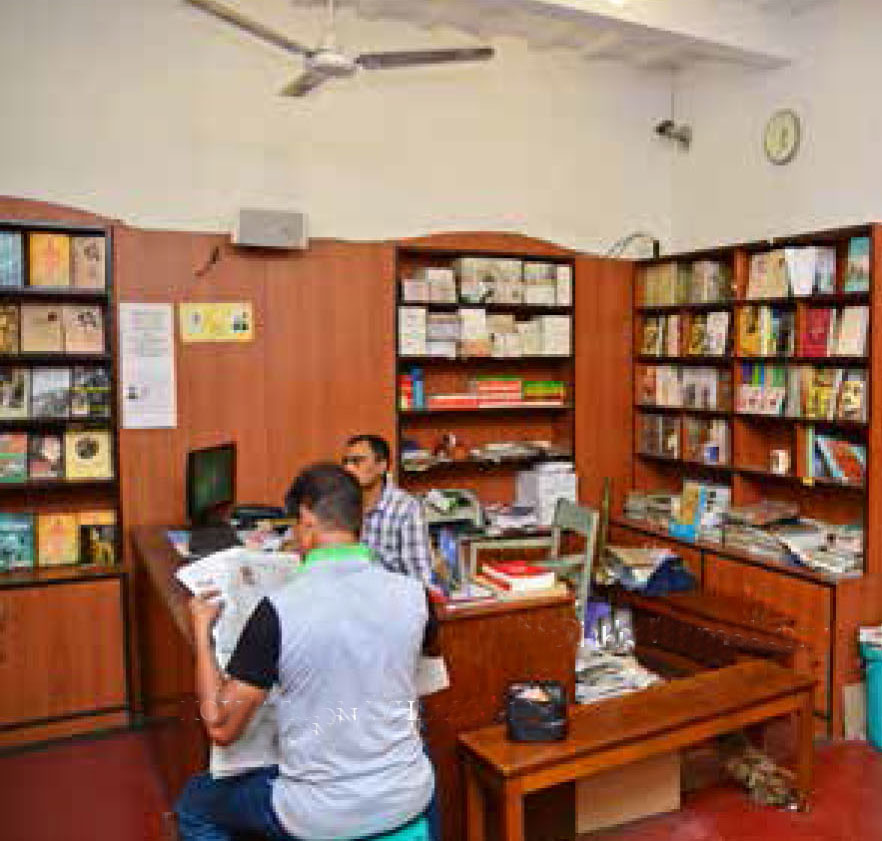
I ndia’s freedom movement gave birth to several leaders with indomitable desire to free the nation from the grasp of British rule. Born among them was a great revolutionist, whom the countrymen accepted as their ‘Netaji’ or the leader of the nation’s freedom struggle. Netaji Bhawan, a building maintained as a memorial and research centre to the life of the Indian nationalist "Netaji" Subhash Chandra Bose on Elgin Road in south Kolkata’s Bhawanipore, is not just a museum but an account of a man’s fight till death, against the might of colonialism.

The first floor of the three-storey building has six rooms that were mostly used as bedrooms or living rooms by the Bose family members. One of these rooms belonged to Subhash Chandra Bose himself. The room, now turned into a repository, contains Netaji’s cot and the bedstead of his father, Janakinath Bose. There is also a wooden study table, a dressing table, an old pendulum clock and a few utensils which were once used by the great leader. A portrait of Netaji’s father hangs from the front wall. On the balcony adjacent to the bed room, footsteps of Netaji are imprinted by the museum authorities, signifying the path he used during his 'great escape’ from the house, on January 16, 1941.
The next room was used by Netaji’s elder brother, Sarat Chandra Bose, who was also his great inspiration. Besides having the bed and other usual furniture like study table and wardrobe, the room showcases a host of black and white photographs of the Bose brothers, who played a pivotal role in India’s freedom movement. There are photographs of Sarat Chandra Bose during his various engagements in Europe and with his wife, Bibhabati Devi during their visit to Burma (Myanmar) in 1946 after Subhash Chandra’s mysterious disappearance and also of their visit to Switzerland in 1948, a year after India’s independence

Netaji's bedroo

The back door exit used during the Great Escap

The study room of Subhash Chandra Bose
The third room on the other side of the stairs along the same balcony used to be Netaji’s study. The massive room with large glass windows and a six-seater table was also used as the office, where Netaji held several of his meetings with his fellow Congress activists. The walls of the room, painted in Tricolour (colours of Indian National Congress), signify his love and devotion for the party. The room also has a wooden writing desk and bookcases containing books and other documents, once used by Netaji
The second floor has a massive hallway and a relatively smaller room on either side of the stairs that are packed with items used by Subhash Chandra Bose. Both the rooms have television sets that play audio-visual clippings about different phases of Netaji’s life during his fight against the British rule and his endeavours with the Indian National Army or the Azad Hind Fauj. The hall room contains several photographs of Bose in his different stages, starting from his school days to his ascendency as the CEO of Calcutta Corporation and also as the mayor of the city. Several hand-written letters by Bose, which serves as invaluable documents of the man’s contribution to the nation, are also showcased in the room. At one corner, British poet E.F. Oaten’s poem on Netaji Subhash Chandra Bose is displayed.

The Wonderer - used during the Great Escap

Exteriors of Netaji Bhava
As a brilliant student, Bose easily got through Indian Civil Service examination, from which he later resigned to plunge himself into the task of freeing the nation from the foreign oppressors. The room contains Bose’s letter of resignation from the ICS in April, 1921. Another special photograph portrays him on a horse at an event in Calcutta Congress in 1928, reminiscent of his iconic statue in north Kolkata’s Shayam Bazar, fivepoint crossing. A striking photograph of thousands of people gathered on the streets of the then Calcutta with their umbrellas open, to listen to the great leader even in torrential rain, would surely catch any visitor’s eye.
During his days in Congress, Bose became immensely popular as a national leader, but later resigned from the party president’s position due to difference of opinions with other leaders including Mahatma Gandhi. Two iconic portraits of Bose, one with Gandhiji at a Congress convention in Haripura in 1938 and another with Mohammad Ali Jinnah and Jawaharlal Nehru - who later became prime ministers of Pakistan and India, is displayed in the museum; as also his letter of resignation from the Indian National Congress. The visitors can see several manuscripts and handbills of his party, the Forward Block, which was formed after his resignation from the Congress.

Bedroom of Sarat Chandra Bos

Netaji Bhawan Library

Shoes used by Netaj
The museum has a collection of dresses worn by Netaji, including his familiar Khaaki uniform, his black long coat and black cap, as the General of Indian National Army. The marble bowl and plate used by Netaji during his last dinner in the house, before the great escape, can also be seen
The other room in the museum plays a significant audio-visual clip that shows Bose’s growing popularity among the world leaders during the Second World War and his subsequent formation of the Azad Hind Fauj, that vowed to drive away the British rulers from Indian soil at the cost of their blood. Besides the picture of Bose taking salute as the supreme commander of INA, the room also showcases the badges given to the different regiments of Bose’s army and the various shoulder and car insignias used by them. Inspite of creating regiments based on caste or ethnicity in the INA, Bose mixed them up to create a sense of harmony and fellow-feeling among the soldiers. A photograph in the room shows Hindu, Muslim and Sikh soldiers having lunch together at an INA barrack.
INFO
Name: Netaji Bhawan
Address: 38/2, Elgin Road
(Lala Lajpat Rai Sarani)
Kolkata 700020
Tel: 033- 24868139 Open: 11 am to 4:30 pm
(Tuesday - Sunday)
Photography: Permission Required